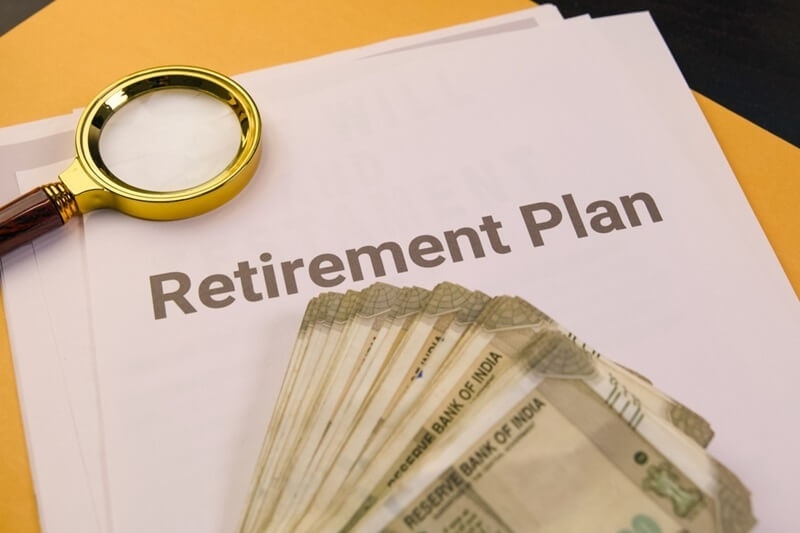
For decades, retirement planning was all about accumulating a large nest egg and hoping it would survive. But in today's world, that line of thinking is rapidly changing. Retirees are living longer, healthcare costs are rising, and the economy is more unpredictable than ever. That's why cash flow-driven retirement planning has become a more practical and realistic approach to retiring.
Instead of simply focusing on asset growth, cash flow planning looks at how much money you'll need and where it will come from on a monthly basis. It's linked directly back to your lifestyle and needs, giving you more visibility and control of your future finances. In this blog, we'll take a closer look at what the model is, how to develop a cash flow retirement plan template, managing cash flow retirement living, and why it's more useful than traditional methods.
Cash flow based retirement planning is a method of projecting and planning for the income and expenses you will have during retirement. It's simply a matter of knowing what's coming in, what's going out, and ensuring that the incoming cash flow consistently equals or surpasses your lifestyle requirements.
Rather than assuming you'll be okay if you just stash some magic lump sum, this model has you consider how you'll spend and where the money will come from month to month or year to year. That includes pensions, social security, investments, annuities, part-time work, and other income sources.
Cash flow-based retirement planning is dynamic. It enables you to plan for real-life events—like home repairs, vacations, medical bills, or helping a family member—rather than some random percentage or set withdrawal rate.
The best feature of cash flow planning is its flexibility. Retirement is not the same for everyone. Some retire early. Others might continue with freelance work or run a small business. Some will need more money for travel in the early years and more for health care in the later years.

To create a solid plan, you’ll want to use a cash flow retirement plan template.
This is where the magic of cash flow based retirement planning really takes hold. It provides a clear, realistic picture of what your retirement might be like—and gives you the tools to improve it.
While a spreadsheet will suffice, a good retirement cash flow projection tool will bring your plan to life. Online tools typically have formulas built in to account for inflation, investment returns, and tax implications. They also enable you to create different scenarios—e.g., retiring early, taking a lump sum pension, or increasing healthcare costs.
If you use a retirement cash flow projection program, you can observe how your expenses and income might evolve over 20 or 30 years. This level of prediction avoids errors and provides peace of mind. You can test different assumptions and develop contingency plans if something does not work out as expected.
These tools can also make comparisons easier, particularly when deciding between a pension lump sum vs annuity, or when juggling multiple income sources. Rather than making choices in isolation, you’ll be able to see how each decision impacts your long-term cash flow.
Once you have a plan, part two is the actual management of retirement living cash flow. This is not merely budgeting—it's setting your money up to work for you on a monthly basis.
That's the beauty of cash flow based retirement planning—it is not a static plan that you create and then ignore. It is an ongoing process that enables you to adjust and make smarter choices as your life and the economy change.
You might be wondering how it is different from what you have traditionally learned in the past. That's where the cash flow vs asset based planning argument comes in.
In asset-based planning, the goal is to save a specific amount—say ?2 crore or ?3 crore—by a certain age. This model assumes you’ll withdraw a fixed percentage of your assets annually, such as the famous 4% rule. While this is simple, it doesn’t account for real-life changes in expenses or market conditions.
Cash flow retirement planning flips that idea on its head. Instead of stressing about a large number, it focuses on regular income. The question is: What do I need on a monthly basis, and how do I ensure that I have that amount covered?
That subtle shift in mindset can be liberating. You move from stressing about whether your assets are "enough" to actively managing your lifestyle to match your income.
In contrasting asset vs cash flow based planning, the majority of financial planners recommend a hybrid solution—accumulate adequate assets, yes, but render them income-generating, secure, and predictable. Cash flow planning does precisely that.
Consider the case of Rina, a 58-year-old teacher who wishes to retire at 62. She had initially planned to save ?1.5 crore. But when she used a cash flow retirement plan template, she discovered that her approximate expense was ?75,000 every month, while her pension and investment income was only ?55,000.
By visiting a retirement cash flow projection tool, she modeled several scenarios. She discovered that delaying retirement by two years, reducing discretionary spending by 15%, and purchasing a small annuity would eliminate the gap.
Rina is not only on track for retirement today but also knows she's planned realistically. That's the power of cash flow based retirement planning—it turns vague assumptions into tangible, actionable plans.
One of the best qualities of this kind of planning is that managing cash flow retirement living is flexible. Life never goes exactly on schedule. Maybe you find yourself moving to a different city, babysitting grandchildren, or going back to part-time employment. A rigid plan based just on your assets does not adjust well to those kinds of changes. But a cash flow model can be updated on a regular basis to reflect your real situation.
That's why it is critical to revisit your plan each year. Update your income streams, re-evaluate your expenditures, and inflation-proof or lifestyle-proof as necessary. Think of your plan as a living document—a map that evolves with you. Through continuous use of your retirement cash flow projection calculator and yearly updates to your cash flow retirement planning template, you can stay in front of any financial curveballs.
Retirement doesn't have to be a leap into the unknown. With cash flow-based retirement planning, you can craft a clear, sustainable path that reflects your actual needs, income, and goals. It's a lifestyle plan, not a budgeting strategy, that allows you to live securely and confidently.
Whether you’re ten years from retirement or already there, it's never too early—or too late—to switch from an asset-only mindset to a cash flow one. Use the right tools, take the time to plan, and embrace the flexibility of this approach. When it comes to your future, the most important thing isn't how much you've accumulated. It's the understanding that your income will be there, month after month, for as long as you require it.
This content was created by AI